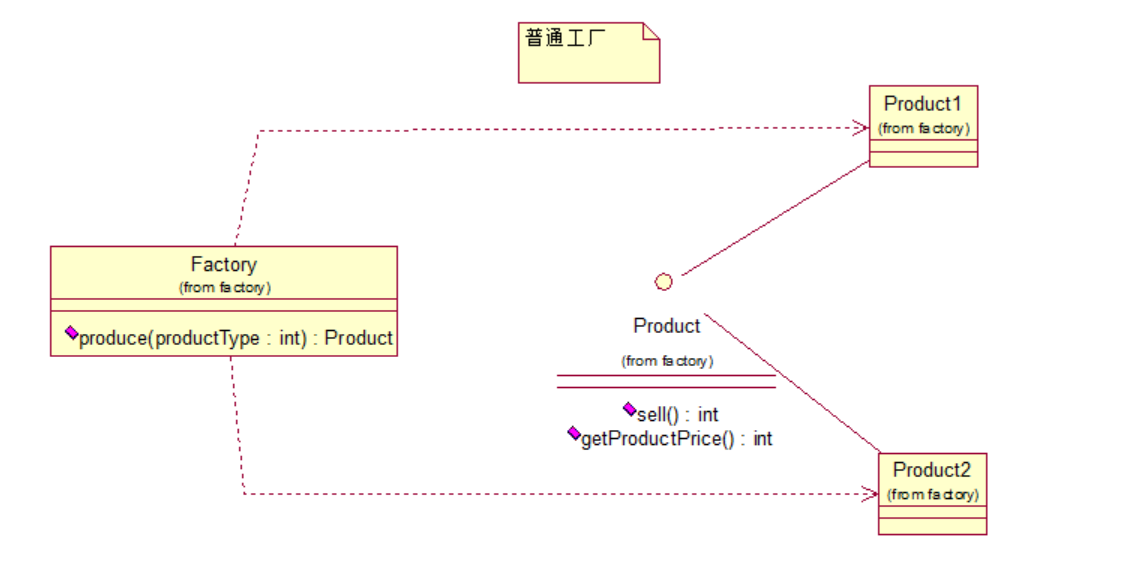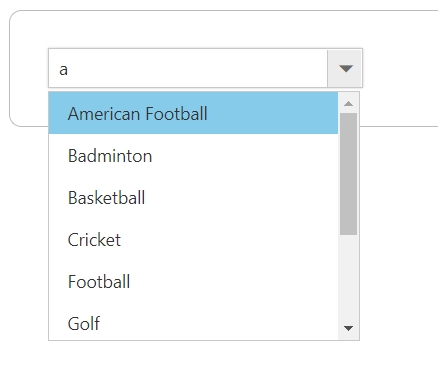逆波兰计算器
逆波兰表达式又叫做后缀表达式,逆波兰表达式把运算量写在前面,把运算符写在后面。
我们平时书写的表达式都是中缀表达式,这个表达式更加方便我们进行计算。但是相对于计算机而言,逆波兰表达式运算更加方便。只需要入栈和出栈两种操作就可以搞定所有运算,遇到操作数就入栈,遇到运算符就出栈,然后将栈顶的两个操作数进行相应运算。
所以,要想用代码实现计算器的首要步骤,就是将 中缀表达式 转为 后缀表达式。
中缀表达式转后缀表达式
步骤如下:
- 初始化两个栈:运算符栈 s1 和储存中间结果的栈 s2;
- 从左至右扫描中缀表达式;
- 遇到操作数时,将其压 s2;
遇到运算符时,比较其与 s1 栈顶运算符的优先级:
①. 如果 s1 为空,或栈顶运算符为左括号“(”,则直接将此运算符入栈;
②. 否则,若优先级比栈顶运算符的高,也将运算符压入 s1;
③. 否则,将 s1 栈顶的运算符弹出并压入到 s2 中,再次转到4.①与 s1 中新的栈顶运算符相比较;
遇到括号时:
①. 如果是左括号”(“,则直接压入 s1;
②. 如果是右括号”)”,则依次弹出 s1 栈顶的运算符,并压入 s2,直到遇到左括号为止,此时将这一对括号丢弃;
- 重复步骤 2—5,直到扫描到表达式的最右边。
- 将 s1 中剩余的运算符依次弹出并压入 s2。
- 依次弹出 s2 中的元素并输出,结果的逆序即为 中缀表达式 对应的 后缀表达式。
形如:
中缀表达式“1+((2+3)×4)-5”,转为后缀表达式的结果是:
1 2 3 + 4 × + 5 –
代码实现
下面的代码只能进行整数的运算。
首先声明一个常量类,里面记录着运算符的字符。
public class Constants {public static final String ADD_SYMBOL = "+";public static final String SUB_SYMBOL = "-";public static final String MUL_SYMBOL = "*";public static final String DIV_SYMBOL = "/";}
接着创建一个返回运算符优先级的类。
public class Operation {/** * 加 */private static int ADD = 1;/** * 减 */private static int SUB = 1;/** * 乘 */private static int MUL = 2;/** * 除 */private static int DIV = 2;/** * TODO 返回对应的优先级 */public static int getValue(String operand) {int result = 0;switch (operand) {case Constants.ADD_SYMBOL:result = ADD;break;case Constants.SUB_SYMBOL:result = SUB;break;case Constants.MUL_SYMBOL:result = MUL;break;case Constants.DIV_SYMBOL:result = DIV;break;default:System.out.println("不存在该运算符");break;}return result;}}
最后就是核心功能了。编写中缀表达式转后缀表达式、计算。
public class ReversePolandCalculator {/** * TODO 将中缀表达式转 list 集合 * * @param str * @return java.util.List<java.lang.String> */public static List<String> infixExpressionToList(String str) {List<String> list = new ArrayList<>();// 作为一个指针int index = 0;int zeroAscii = 48;int nineAscii = 57;// 如果这个操作数是多位数StringBuilder mStr;// 存放每一个字符char ch;do {// 如果 ch 是一个 非数字,需要加入到 list(0-9的ASCII值是48-57)if ((ch = str.charAt(index)) < zeroAscii || (ch = str.charAt(index)) > nineAscii) {list.add("" + ch);// 指针后移index++;} else {// 如果是一个数,需要考虑多位数mStr = new StringBuilder();while (index < str.length() && (ch = str.charAt(index)) >= zeroAscii && (ch = str.charAt(index)) <= nineAscii) {mStr.append(ch);index++;}list.add(mStr.toString());}} while (index < str.length());return list;}/** * TODO 将 中缀表达式的 List 集合转 后缀表达式 * * @param infixList * @return java.util.List<java.lang.String> */public static List<String> infixToSuffixExpressionList(List<String> infixList) {// 符号栈Stack<String> stack = new Stack<>();// 存储中间结果的List<String> resultList = new ArrayList<>();String leftBracket = "(";String rightBracket = ")";// 遍历for (String item : infixList) {// 如果是一个数,加入 resultListif (item.matches("\\d+")) {resultList.add(item);} else if (item.equals(leftBracket)) {stack.push(item);} else if (item.equals(rightBracket)) {// 如果是 右括号,则依次弹出 stack 栈顶的运算符,并压入 resultList,直到遇到左括号为止,此时将这一对括号丢弃while (!stack.peek().equals(leftBracket)) {resultList.add(stack.pop());}// 将 ( 弹出 stack 栈,消除小括号stack.pop();} else {// 当 item 的优先级小于等于 stack栈顶运算符,将 stack 栈顶的运算符弹出并加入到 resultList 中,再次与 stack 中新的栈顶运算符相比较while (stack.size() != 0 && Operation.getValue(stack.peek()) >= Operation.getValue(item)) {resultList.add(stack.pop());}// 将 此时 的 item压入栈stack.push(item);}}// 将 stack 中剩余的运算符依次弹出并加入到 resultListwhile (stack.size() != 0) {resultList.add(stack.pop());}// 因为 存放到 List中,因此按顺序输出就是 对应的 后缀表达式return resultList;}/** * TODO 计算 * * @param expression * @return int */public static int calculate(List<String> expressionList) {// 创建栈Stack<String> stack = new Stack<>();// 遍历for (String item : expressionList) {// 使用正则取出数(匹配多位数)if (item.matches("\\d+")) {// 入栈stack.push(item);} else {// pop 出两个数,并运算,再入栈int num2 = Integer.parseInt(stack.pop());int num1 = Integer.parseInt(stack.pop());int res = 0;switch (item) {case Constants.ADD_SYMBOL:res = num1 + num2;break;case Constants.SUB_SYMBOL:res = num1 - num2;break;case Constants.MUL_SYMBOL:res = num1 * num2;break;case Constants.DIV_SYMBOL:res = num1 / num2;break;default:throw new RuntimeException("运算符有误");}// 把 res 入栈stack.push("" + res);}}// 最后留在 stack 中的数据是运算结果return Integer.parseInt(stack.pop());}}
编写测试方法。
public class Test {public static void main(String[] args) {String expression = "1+((2+3)*4)-5";List<String> infixExpressionToList = ReversePolandCalculator.infixExpressionToList(expression);System.out.println("中缀表达式对应的 List=" + infixExpressionToList);List<String> suffixExpressionList = ReversePolandCalculator.infixToSuffixExpressionList(infixExpressionToList);System.out.println("后缀表达式对应的 List=" + suffixExpressionList);// 计算表达式的值System.out.printf("expression=%d", ReversePolandCalculator.calculate(suffixExpressionList));}}
输出结果:
中缀表达式对应的 List=[1, +, (, (, 2, +, 3, ), *, 4, ), -, 5]不存在该运算符不存在该运算符后缀表达式对应的 List=[1, 2, 3, +, 4, *, +, 5, -]expression=16
基本上一个基于栈的逆波兰计算器就实现了。下面给出完整的逆波兰计算器代码,不仅支持多位数,还支持小数。还可以处理任何空白字符串,包括空格、制表符、换页符。
逆波兰计算器完成版
创建一个常量类
public class Constants {public static final String LEFT = "(";public static final String RIGHT = ")";public static final String ADD = "+";public static final String MINUS = "-";public static final String TIMES = "*";public static final String DIVISION = "/";/** * 运算符级别: + - */public static final int LEVEL_1 = 1;/** * 运算符级别:* / */public static final int LEVEL_2 = 2;/** * int 的 最大值(代表括号的等级) */public static final int LEVEL_HIGH = Integer.MAX_VALUE;}
提取公共方法
public class CommonUtils {/** * TODO 匹配运算符 */public static final String SYMBOL = "\\+|-|\\*|/|\\(|\\)";private static final Pattern PATTERN = Pattern.compile("^[-\\+]?[.\\d]*$");/** * TODO 去除所有 空白字符 * * @param str * @return java.lang.String */public static String replaceAllBlank(String str) {// \\s+ 匹配任何空白字符,包括空格、制表符、换页符等等, 等价于[ \f\n\r\t\v]return str.replaceAll("\\s+", "");}/** * TODO 判断是不是数字 * * @param str * @return boolean */public static boolean isNumber(String str) {return PATTERN.matcher(str).matches();}/** * TODO 判断 是不是 运算符 * * @param str * @return boolean */public static boolean isSymbol(String str) {return str.matches(SYMBOL);}/** * TODO 获取运算等级 * * @param str * @return int */public static int getLevel(String str) {if (Constants.ADD.equals(str) || Constants.MINUS.equals(str)) {return Constants.LEVEL_1;} else if (Constants.TIMES.equals(str) || Constants.DIVISION.equals(str)) {return Constants.LEVEL_2;}return Constants.LEVEL_HIGH;}}
编写核心的计算方法。
public class Calculator {/** * 初始化栈 */public static Stack<String> stack = new Stack<>();/** * Collections.synchronizedList:集合的线程安全包装方法 */public static List<String> data = Collections.synchronizedList(new ArrayList<>());/** * TODO 匹配 * * @param str * @return java.util.List<java.lang.String> */public static List<String> doMatch(String str) {if (str == null || "".equals(str.trim())) {throw new RuntimeException("data is empty");}if (!CommonUtils.isNumber(str.charAt(0) + "")) {throw new RuntimeException("data illegal,start not with a number");}str = CommonUtils.replaceAllBlank(str);String each;int start = 0;for (int i = 0; i < str.length(); i++) {if (CommonUtils.isSymbol(str.charAt(i) + "")) {each = str.charAt(i) + "";//栈为空,( 操作符,或者 操作符优先级大于栈顶优先级 && 操作符优先级不是( )的优先级 及 是 ) 不能直接入栈boolean flag = stack.isEmpty() || Constants.LEFT.equals(each) || ((CommonUtils.getLevel(each) > CommonUtils.getLevel(stack.peek())) && CommonUtils.getLevel(each) < Constants.LEVEL_HIGH);if (flag) {stack.push(each);} else if (!stack.isEmpty() && CommonUtils.getLevel(each) <= CommonUtils.getLevel(stack.peek())) {//栈非空,操作符优先级小于等于栈顶优先级时出栈入列,直到栈为空,或者遇到了(,最后操作符入栈while (!stack.isEmpty() && CommonUtils.getLevel(each) <= CommonUtils.getLevel(stack.peek())) {if (CommonUtils.getLevel(stack.peek()) == Constants.LEVEL_HIGH) {break;}data.add(stack.pop());}stack.push(each);} else if (Constants.RIGHT.equals(each)) {// ) 操作符,依次出栈入列直到空栈或者遇到了第一个)操作符,此时)出栈while (!stack.isEmpty() && Constants.LEVEL_HIGH >= CommonUtils.getLevel(stack.peek())) {if (Constants.LEVEL_HIGH == CommonUtils.getLevel(stack.peek())) {stack.pop();break;}data.add(stack.pop());}}// 前一个运算符的位置start = i;} else if (i == str.length() - 1 || CommonUtils.isSymbol(str.charAt(i + 1) + "")) {each = start == 0 ? str.substring(start, i + 1) : str.substring(start + 1, i + 1);if (CommonUtils.isNumber(each)) {data.add(each);continue;}throw new RuntimeException("data not match number");}}//如果栈里还有元素,此时元素需要依次出栈入列,可以想象栈里剩下栈顶为/,栈底为+,应该依次出栈入列,可以直接翻转整个 stack 添加到队列Collections.reverse(stack);data.addAll(new ArrayList<>(stack));System.out.println(data);return data;}/** * TODO 算出结果 * * @param list * @return java.lang.Double */public static Double calculateResult(List<String> list) {double res = 0D;if (list == null || list.isEmpty()) {return null;}if (list.size() == 1) {System.out.println(list);res = Double.parseDouble(list.get(0));return res;}ArrayList<String> list1 = new ArrayList<>();for (int i = 0; i < list.size(); i++) {list1.add(list.get(i));if (CommonUtils.isSymbol(list.get(i))) {Double d = doTheMath(list.get(i - 2), list.get(i - 1), list.get(i));list1.remove(i);list1.remove(i - 1);list1.set(i - 2, d + "");list1.addAll(list.subList(i + 1, list.size()));break;}}calculateResult(list1);return res;}/** * TODO 运算 * * @param str1 * @param str2 * @param symbol * @return java.lang.Double */public static Double doTheMath(String str1, String str2, String symbol) {Double result;switch (symbol) {case Constants.ADD:result = new BigDecimal(str1).add(new BigDecimal(str2)).setScale(2, BigDecimal.ROUND_HALF_UP).doubleValue();break;case Constants.MINUS:result = new BigDecimal(str1).subtract(new BigDecimal(str2)).setScale(2, BigDecimal.ROUND_HALF_UP).doubleValue();break;case Constants.TIMES:result = new BigDecimal(str1).multiply(new BigDecimal(str2)).setScale(2, BigDecimal.ROUND_HALF_UP).doubleValue();break;case Constants.DIVISION:result = new BigDecimal(str1).divide(new BigDecimal(str2)).setScale(2, BigDecimal.ROUND_HALF_UP).doubleValue();break;default:result = null;}return result;}}
编写测试类。
public static void main(String[] args) {String math = "9+(3-1)*3+10/2";try {calculateResult(doMatch(math));} catch (Exception e) {e.printStackTrace();}}
输出结果:
[9, 3, 1, -, 3, *, +, 10, 2, /, +][20.0]
逆波兰计算器的实现就到这里结束了,其中存在很多问题。如果想实现一个完整的计算器,还有很多细节需要考虑进去。数据结构也是一步一步学习的。慢慢理解才能变的透彻。
参考资料:
作者:韩顺平
课程:《Java数据结构与算法》


































还没有评论,来说两句吧...